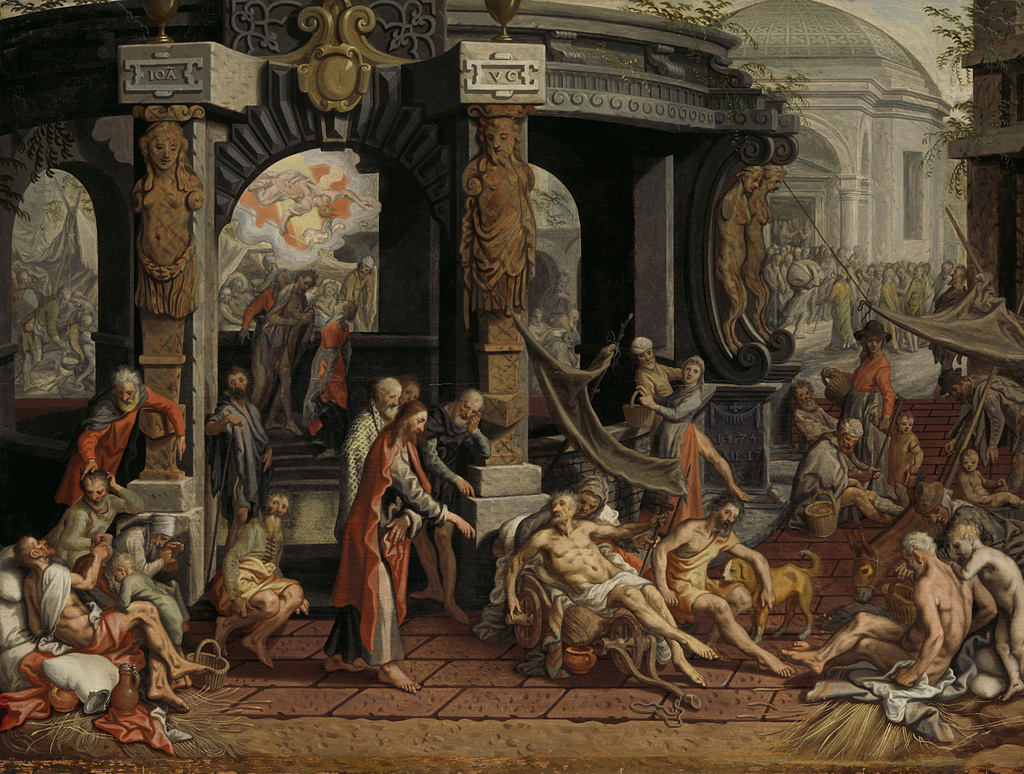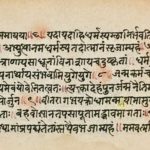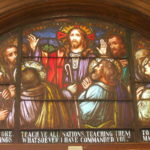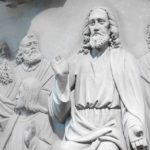This miracle occurs in Capernaum. Mark tells us that it takes place “A few days later.” Jesus has returned from his travels in Galilee and has come back to the city that will become His base of operations. As in the first chapter of Mark where, “the whole town gathered at his door,”so here, “so many gathered that there was no room left, not even outside the door.” There is no indication in the Gospels that Jesus had His own house, so the most likely location is again at Simon Peter’s home.
Like the exorcism in the synagogue in the previous chapter, this miracle starts with Jesus teaching the crowd. Again, we are not privy to what Jesus was teaching the people. Mark just says, “he preached the word to them.” Mark gives us several examples of Jesus’ teaching in other locations in His Gospel. What happens while Jesus is teaching is the real subject that Mark wants to discuss.
As Jesus is teaching, four men come carrying a fifth man who is paralyzed. They are unable to get into the house because of the crowd. They are determined, however, to get their friend to Jesus. They managed to climb up on the roof of the house and hoisted the sick man to the roof as well. Many houses in Palestine had steps that led to the roof. The four men then dug a hole through the roof to create an opening. Roofs in Palestine were made of tree branches and baked clay mixed with a straw so this was not a difficult job. It probably created quite a disturbance, however, while Jesus was teaching down below where they were digging!
The paralyzed man was then lowered on his mat down to Jesus. Mark notes that Jesus saw their faith. Their actions demonstrated their faith. The four friends, having completed their task, now disappear from the story. This is an interesting point. The friends have done the hard work. They carried their friend to the house where Jesus was and then up onto the roof. They dug the hole in the roof and then lowered the paralytic down to Jesus. It is their faith that Jesus notices. Now that their job is finished, the reader’s attention is focused on Jesus, the paralytic and the religious leaders.
Jesus’ response is to say to the man on the mat, “Son, your sins are forgiven.” This is not what we would have expected Him to say. The reader would expect Jesus to say, “Rise and walk.” Instead, Jesus tells him that his sins are forgiven. This pronouncement by Jesus brings up the issue of the relationship between sin and sickness. In this case, at least, Jesus seems to make some type of connection between the two.
Is sickness caused by sin?
In John’s Gospel, this very question comes up concerning the man born blind. “His disciples asked him, “Rabbi, who sinned, this man or his parents, that he was born blind?” For the disciples, this is not even open for discussion. They believed that someone’s sin caused the man to born blind. Jesus’ answer, however, makes it clear that sin was not the cause of the man’s blindness: “Neither this man nor his parents sinned,” said Jesus, “but this happened so that the work of God might be displayed in his life.”
The passage under consideration in Mark, however, points in a different direction. By telling him that his sins are forgiven before He heals him, Jesus implies a relationship between the sickness and the sin. Juel states, “Jesus’ words presuppose a link between sin and disease.”
Probably the safest assumption that we can make is that some sickness is caused by sin. There seems to be a Scriptural basis for this, as we have seen. At any rate, Jesus seemed to see a connection between this man’s paralysis and his sin. Mark does not tell us what the sick man’s reaction is to this pronouncement of his forgiveness. Instead, Mark lets the reader know what the religious leaders in the audience are thinking: “Now some teachers of the law were sitting there, thinking to themselves, “Why does this fellow talk like that? He’s blaspheming! Who can forgive sins but God alone?”
Mark then records that Jesus immediately knew what the religious leaders were thinking. Mark seems to indicate that Jesus received this knowledge supernaturally. There are many other examples throughout the Gospels where Jesus appears to read people’s minds and know their thoughts.
As a Man, Jesus was certainly limited in many ways.
He could not be everywhere at once, for example. His human body brought with it certain limitations. Jesus got tired and had to sleep. He had to eat and drink, etc. With these limitations, the issue of Jesus’s knowledge and insight come up for discussion. Jesus, Himself, notes some limitations on His knowledge when He says, “No one knows about that day or hour, not even the angels in heaven, nor the Son, but only the Father.”
How then, did Jesus get His insight into what the religious leaders were thinking?
The most likely answer is that He relied on the Holy Spirit to help Him and used the spiritual gifts that Paul described in his letters. In this case, the word of knowledge is probably how Jesus was able to know what the teachers of the law were thinking.
Paul refers to the “word of knowledge.” Morris points out that, “Paul associates knowledge with mysteries, revelations, and prophecy. “Paul understands this gift to be one in which the believer receives “supernatural mystical knowledge.” We saw in the first chapter of Mark that the Holy Spirit came and rested on Jesus. The Holy Spirit would have provided Jesus with supernatural insight into what people were thinking.
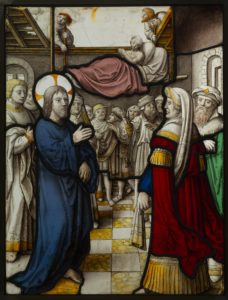 Now that Jesus knew what the teachers of the law were thinking, He called them on it. “Why are you thinking these things?” He does not dispute their claim. They are right: only God can forgive sin. At the same time, Jesus does not feel the need to explain Himself or to defend His right to pronounce forgiveness. He then asked an interesting question. “Which is easier: to say to the paralytic, ‘Your sins are forgiven,’ or to say, ‘Get up, take your mat and walk’?” Obviously, it is much easier to pronounce someone’s forgiveness as opposed to telling a paralytic to get up and walk! Words are always easier than actions.
Now that Jesus knew what the teachers of the law were thinking, He called them on it. “Why are you thinking these things?” He does not dispute their claim. They are right: only God can forgive sin. At the same time, Jesus does not feel the need to explain Himself or to defend His right to pronounce forgiveness. He then asked an interesting question. “Which is easier: to say to the paralytic, ‘Your sins are forgiven,’ or to say, ‘Get up, take your mat and walk’?” Obviously, it is much easier to pronounce someone’s forgiveness as opposed to telling a paralytic to get up and walk! Words are always easier than actions.
Jesus then said, “But that you may know that the Son of Man has authority on earth to forgive sins . . .” He then addressed the paralytic and told him, “I tell you, get up, take your mat and go home.” The result was that the paralytic did exactly that “and walked out in full view of them all.” The crowd was understandably amazed and praised God saying, “we have never seen anything like this.”
This miracle brings together forgiveness and physical healing. Fuller notes that they “are not two separate things, the one inward and spiritual, the other outward and physical. The remission of sins is the total gift of salvation of which physical healing is a part.” Jesus came not just heal someone’s body; He came to heal the whole person.
It is important to note here that this healing is not just a display of Jesus’s authority to prove a point to the teachers of the law. Rather, this was exactly what Jesus came to do: forgive people and heal them. This is actually a beautiful picture of salvation. The paralyzed man is held in bondage by his sickness and confined to his bed just as we are in bondage to our sins. His healing is a vivid picture of release from sins and guilt. Salvation is healing. Jesus often uses the word for healing and salvation interchangeably.
At the same time, however, it is clear that Jesus is claiming divine authority here to forgive sins. He not only claims divine authority, But He also goes out of His way to prove it by performing the healing. The religious leaders clearly understood what Jesus was claiming. They do not see through the eyes of faith and see only a blasphemer. Many in the crowd, however, were moved to praise God. This was an ongoing pattern in Jesus’ ministry. Groups of people would see the same miracle that Jesus performed. Some of the people would be moved to faith and others were moved to try and have Jesus put to death.

